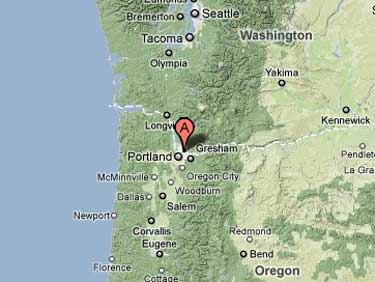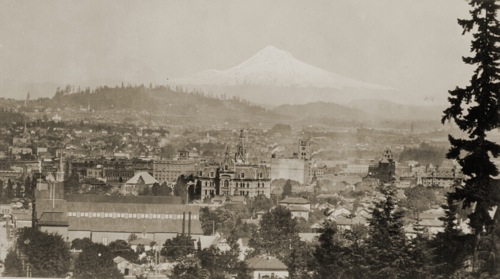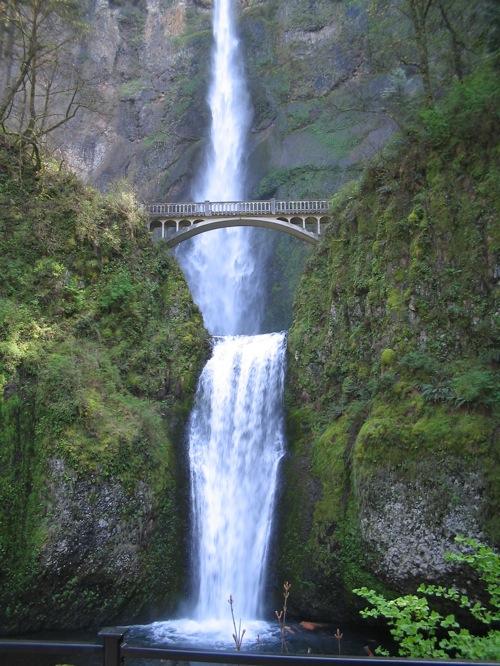|
|
Hello Whyvillians! I am going to be starting a new series here in the Times. Every week, I will showcase a different city in America. (Oh, Canadians, quit your complaining. This is the perfect chance for you to learn about your Southern Neighbor.) To start of the series, I decided to showcase a city close to me, Portland, Oregon. Portland is the closest major city to where I live, and is a wonderful city.
Where is Portland?
Portland is located in the Pacific Northwest, on the Oregon-Washington border, which follows the Columbia River. If you look at a map of the area, you see that Washington dips petty far South, up until about 60 miles from the Pacific Ocean, where Oregon suddenly starts going north, into Washington. Portland is located right at the bottom of that dip.
Portland is about 250 miles south of Seattle, WA, about 300 miles north of the Oregon-California border, about 40 miles east of the Pacific ocean, and about 350 miles west of the Oregon-Idaho border.

History of Portland
Portland, OR was founded as a spot called, "The Clearing," which was on the Willamette River, and between Oregon City, and Fort Vancouver. (Again, sorry Canadians, but I am talking about Fort Vancouver, WA, USA, not Vancouver BC.) In 1843, William Overton, thought that Portland had good commercial potential, being near the great Columbia river, and not to far from the Pacific Ocean. He bought a lot of Portland land, but didn't have a quarter (That's right, 25 cents . . . I had to read that over a few times to really believe it.) to file a land claim. So, what did he do? He decided to let his partner, Asa Lovejoy share his 640 acres (a full square mile) for just 25 cents. After a few years, Overton got bored with clearing trees, so he decided to sell his claim to a man named Francis Pettygrove.
Then it came time to name the town. Both Pettygrove and Lovejoy wanted to name it after their home towns, Pettygrove's being Portland, Maine, and Lovejoy's being none other then Boston. So, they had a coin toss (apparently, they were able to find more quarters . . .), and Pettygrove won, and so the city was named Portland. I personally think Portland is a nicer name for it than Boston.
Back during that time, Oregon City was a much larger town, and Portland looked quite small in comparison. But, as time went on, people began coming to Portland, because it was a lot closer to the Pacific Ocean and Columbia River then Oregon City. In fact, you couldn't even get to Oregon City on the Columbia or Willamette rivers. By 1850, Portland had 800 citizens (which is still a pretty large town here in the Pacific Northwest . . .) and it's own mill. Portland was the major port in the northwest for most of the rest of the 19th century, until Seattle started becoming more popular. (More on that next time . . .)

Portland circa 1890.
Citizens of Portland
Today, Portland has around 500,000 people living in it. Oh yes, we have come a long way since 1850. If you include all of the Portland Metro area, that number jumps to over 2 million people. It is one of the fastest growing areas in the whole country. It is by far the most populated city in Oregon, taking 15% of the total population, respectfully. In fact, if you took the 2nd-6th most populous cities and combined them, they still wouldn't have as many people as Portland. Many of Oregon's other large cities are built around Portland, and contribute to it.

Living in Portland
Portland has to be one of the healthiest places to live. Everywhere, people are biking, and hiking. Portland is known for being a "green" city, and you can see it. Portland encourages use of it's mass transit system, with free train and bus rides, to cut back on emissions. Portland is a beautiful city, with 2 rivers (Columbia and Willamette) running through it, and several beautiful parks. Portland also has a lot of rain, which, while keeping everything green and alive, means that we don't get many sunny days. During the summer at least 3 days a week are cloudy, and rainy, and during the winter I would say there's only 2 or 3 days the whole month that are sunny.
Portland (and the outlying areas) has a lot of farms. People here are big on fresh fruit, and live stock, and everyone sort of has that laid back, calm life style, that reminds you of farms. It is a very calm, cool city, and one I love to live in. It's not the largest city ever, but it certainly isn't the smallest.
I always have said that no matter which direction you go, if you go 20 miles out of Portland, your going to hit beautiful farmland, and forests. Portland is built around those, and started as a milling town, with a popular port.
Some Portland Landmarks
OMSI - Oregon Museum of Science and Industry, which is known for showing green ways of living.
Powell's Bookstore - I personally can spend hours at Powell's Books, which is the largest bookstore in the whole world. It has several locations, as well as a main campus.
Multnomah Falls - Multnomah Falls is about 20 miles east of Portland, and is made up of two waterfalls, one being 471 feet (144 m) and one being about 80 feet (25 m) high. Multnomah falls attracts hundreds of visitors every day to hike up the waterfall. It is one of my favorite parts of the Northwest.

Mt. Hood - Large mountain about 40 miles east of Portland.

Portland is a great city, and I hope you all will get a chance to visit it some day, a little more informed about it.
Off to Powell's,
Xenon
Author's Note: Sources: Portland.com, Portlandonline.com.
Pictures: Google Maps, VintageSeattle.org, picmet.org, mthoodclimbers.blogspot.com, wishwallpapers.com
|